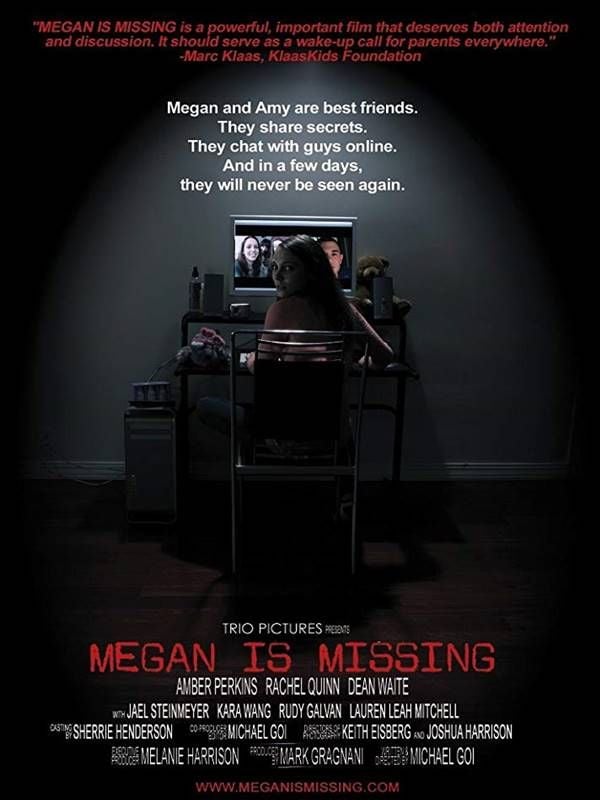Megan Is Missing. It is a film that often sparks discussion. Many find it deeply disturbing.
Understanding the Film: A Guide for Educators
The movie is a 2011 psychological horror film. It depicts the abduction of two teenage girls, Megan Stewart and Amy Herman. The film aims to raise awareness. It focuses on the dangers of online interactions and exploitation.
Some educators might consider addressing this topic. This can be done in classes on media literacy. It can also be done in health or psychology courses. The key is to approach it with sensitivity. It is essential to be prepared to discuss the film's graphic content. It should always align with school policies.
Navigating Difficult Content
The film contains scenes of sexual assault and violence. These scenes are very graphic. They can be extremely upsetting. It is important to preview the film thoroughly. Decide if it is appropriate for your students. Consider their age and maturity level. Check school guidelines on sensitive content.
If you decide to discuss the film, focus on the underlying message. Discuss the dangers of online predators. Talk about safe online practices. Emphasize the importance of seeking help if they feel threatened. Remind students that what they see in the film is a dramatization. It does not represent all online interactions.
Common Misconceptions
Many people view the film purely as shock value. They think it is gratuitous. It's essential to address this misconception. The filmmakers claim the intent was to create a cautionary tale. They wanted to deter risky online behavior. Discussing the director's intent can be helpful.
Another misconception is that this type of abduction is common. While online grooming and exploitation happen, they are not always portrayed in the film. Provide statistics about missing persons cases. Talk about the realities of online safety. Help students understand the difference between fiction and reality.
Some believe that watching the film is enough to prevent abduction. Education needs to be comprehensive. It should include practical strategies. Teach students how to protect their privacy. Encourage them to report suspicious online activity. Promote healthy communication with trusted adults.
Engaging Students Responsibly
Do not show the film in its entirety. Consider discussing specific scenes or themes. Short clips can be used to illustrate points about online safety. Choose clips carefully. They should be appropriate for the age group. They should support the lesson's objectives.
Use case studies to illustrate the dangers of online interactions. These can be fictional scenarios. They can be based on real-life events. Present them in a way that does not sensationalize the issue. Focus on the decision-making process. Explore the consequences of risky behavior.
Invite guest speakers. Consider a law enforcement officer specializing in online safety. A therapist who works with victims of online exploitation could also be valuable. They can provide expert insights. They can answer student questions.
Discussion Points and Activities
Discuss the role of social media. Analyze how it can be used for both good and bad. Talk about the pressure to present a certain image online. Encourage critical thinking about the content they consume.
Create a safety plan. Have students brainstorm strategies to protect themselves online. This can include setting strong passwords. It includes being cautious about sharing personal information. It also includes being aware of their digital footprint.
Role-playing activities can be effective. They can simulate online interactions. This allows students to practice assertive communication. It helps them navigate potentially dangerous situations. Provide scenarios that require them to say "no" or seek help.
Addressing Potential Trauma
Be aware that some students may have personal experiences. These could relate to online harassment or exploitation. Create a safe and supportive classroom environment. Encourage students to share their concerns privately. Provide resources for mental health support. Know school protocols for reporting suspected abuse.
It's crucial to emphasize confidentiality. Make it clear that disclosures will be handled with sensitivity. However, explain limits to confidentiality. You have a legal obligation to report suspected abuse or neglect. Provide contact information for trusted adults at school. This includes counselors, nurses, and administrators.
Debriefing after discussing sensitive topics is essential. Allow students to process their emotions. Encourage them to ask questions. Provide accurate information to address any misinformation or confusion. Reiterate key safety messages. Reinforce the importance of seeking help when needed.
Alternatives to Showing the Film
If the film is too graphic for your students, consider alternative resources. Documentaries about online safety are available. Articles and websites offer information about online predators. These can be less disturbing than the film. They still convey important messages.
Use fictional stories to explore the themes of the film. Young adult novels often address issues like online relationships. They address cyberbullying and sexting. These stories can provide a safe distance. It allows students to explore these issues without being overwhelmed.
Educational websites offer interactive games. They offer quizzes about online safety. These can be engaging and informative. They teach students about privacy settings. They also teach about responsible online behavior. They do it in a fun and accessible way.
Parental Involvement
Inform parents about the topics you will be discussing in class. Provide them with resources about online safety. Encourage them to have conversations with their children about these issues. This promotes open communication at home. It reinforces the messages learned in school.
Send home a permission slip if you plan to show any clips from the film. Explain the purpose of the lesson. Describe the content that will be covered. Give parents the opportunity to opt their child out of the activity. Respect their decisions. Provide alternative assignments for students who do not participate.
Host a parent information night. Invite a speaker to discuss online safety. Offer tips for monitoring their child's online activity. Explain the potential risks of social media. Provide resources for reporting online abuse. Work together to create a safer online environment for all students.
Megan Is Missing can be a valuable, yet challenging, teaching tool. Careful planning and responsible implementation are key. Prioritize student safety and well-being. By approaching this topic with sensitivity, you can help students develop critical thinking skills. You can also help them stay safe online.


